I am currently trying to create a stacked bar chart based on the dataset below:

Explanation of data: Every odd column represents the company variable and every even column represents the production by that company. Every two columns(the company and the production) represents the production patterns for that hour.
This is my data:
structure(list(Hour = c(NA, NA, NA, NA, NA, NA, NA, NA, NA, NA,
NA, NA, NA, NA, NA, NA, NA, NA, NA, NA, NA, NA), X1 = structure(c(4L,
5L, 5L, 5L, 5L, 2L, 3L, 5L, 5L, 1L, 1L, 1L, 1L, 1L, 1L, 1L, 1L,
1L, 1L, 1L, 1L, 1L), .Label = c("", "B", "C", "Company", "D"), class = "factor"),
X1.1 = structure(c(10L, 5L, 7L, 9L, 2L, 4L, 8L, 3L, 6L, 1L,
1L, 1L, 1L, 1L, 1L, 1L, 1L, 1L, 1L, 1L, 1L, 1L), .Label = c("",
"30", "31", "49", "5", "63", "73", "83", "86", "Production"
), class = "factor"), X2 = structure(c(4L, 5L, 2L, 5L, 5L,
2L, 5L, 5L, 2L, 3L, 2L, 2L, 3L, 5L, 1L, 1L, 1L, 1L, 1L, 1L,
1L, 1L), .Label = c("", "A", "B", "Company", "D"), class = "factor"),
X2.1 = structure(c(15L, 10L, 12L, 6L, 11L, 13L, 3L, 14L,
5L, 4L, 2L, 9L, 8L, 7L, 1L, 1L, 1L, 1L, 1L, 1L, 1L, 1L), .Label = c("",
"15", "32", "34", "36", "5", "50", "52", "58", "71", "73",
"74", "78", "98", "Production"), class = "factor"), X3 = structure(c(5L,
2L, 2L, 6L, 6L, 6L, 6L, 6L, 6L, 6L, 6L, 4L, 6L, 4L, 3L, 3L,
1L, 1L, 1L, 1L, 1L, 1L), .Label = c("", "A", "B", "C", "Company",
"D"), class = "factor"), X3.1 = structure(c(17L, 6L, 15L,
3L, 4L, 16L, 13L, 7L, 11L, 9L, 5L, 8L, 10L, 14L, 12L, 2L,
1L, 1L, 1L, 1L, 1L, 1L), .Label = c("", "1", "11", "14",
"19", "33", "42", "43", "50", "57", "68", "81", "82", "84",
"85", "95", "Production"), class = "factor"), X4 = structure(c(4L,
5L, 1L, 1L, 5L, 5L, 5L, 5L, 1L, 1L, 5L, 5L, 3L, 3L, 3L, 5L,
2L, 2L, 5L, 2L, 5L, 5L), .Label = c("A", "B", "C", "Company",
"D"), class = "factor"), X4.1 = structure(c(21L, 1L, 18L,
12L, 20L, 10L, 5L, 6L, 4L, 11L, 16L, 9L, 3L, 7L, 13L, 19L,
8L, 17L, 4L, 2L, 15L, 14L), .Label = c("100", "2", "24",
"28", "3", "38", "4", "40", "42", "43", "47", "48", "54",
"64", "69", "7", "71", "81", "9", "97", "Production"), class = "factor"),
X5 = structure(c(5L, 6L, 6L, 3L, 6L, 6L, 6L, 6L, 2L, 2L,
6L, 6L, 6L, 3L, 6L, 3L, 6L, 3L, 4L, 1L, 1L, 1L), .Label = c("",
"A", "B", "C", "Company", "D"), class = "factor"), X5.1 = structure(c(18L,
12L, 3L, 9L, 14L, 10L, 16L, 2L, 17L, 13L, 5L, 13L, 4L, 7L,
6L, 2L, 15L, 11L, 8L, 1L, 1L, 1L), .Label = c("", "0", "1",
"12", "25", "30", "34", "38", "39", "45", "46", "58", "60",
"68", "73", "78", "97", "Production"), class = "factor"),
X6 = structure(c(5L, 3L, 4L, 3L, 6L, 6L, 3L, 3L, 2L, 3L,
6L, 3L, 6L, 3L, 2L, 1L, 1L, 1L, 1L, 1L, 1L, 1L), .Label = c("",
"A", "B", "C", "Company", "D"), class = "factor"), X6.1 = structure(c(16L,
9L, 4L, 5L, 8L, 11L, 15L, 6L, 10L, 7L, 14L, 3L, 12L, 2L,
13L, 1L, 1L, 1L, 1L, 1L, 1L, 1L), .Label = c("", "1", "29",
"3", "34", "4", "42", "48", "65", "68", "70", "8", "92",
"95", "96", "Production"), class = "factor")), .Names = c("Hour",
"X1", "X1.1", "X2", "X2.1", "X3", "X3.1", "X4", "X4.1", "X5",
"X5.1", "X6", "X6.1"), class = "data.frame", row.names = c(NA,
-22L))
I was able to use the code below to create a chart for the first hour:
dataset <- read_excel("Example.csv")
hour = 1
Production <- dataset[, 2]
Company <- dataset[, 1]
ggplot(data = dataset, aes(x = hour, y = Production, fill = Company)) +
geom_bar(stat = "identity")
The bar chart is pictured below:

Now the problem:
I have written a code to create a dataset for the "Company" variable and the "Production" variable. But when I run the code, I have this error:
Aesthetics must be either length 1 or the same as the data (21): x, y, fill
I am wondering what technical error am I committing and how I can solve this. This is my code:
hour <- matrix(0, 1, 2)
hour[1, 1] = 1
hour[1, 2] = 2
Production <- matrix(0, 22, 2)
for (i in 1:2) {
Production[1:22, i] <- dataset[1:22, (2 * i)]
}
Company <- matrix(0, 22, 2)
for (i in 1:2) {
Company[1:22, i] <- dataset[1:22, (2 * i) - 1]
}
Any help would be greatly appreciated.


